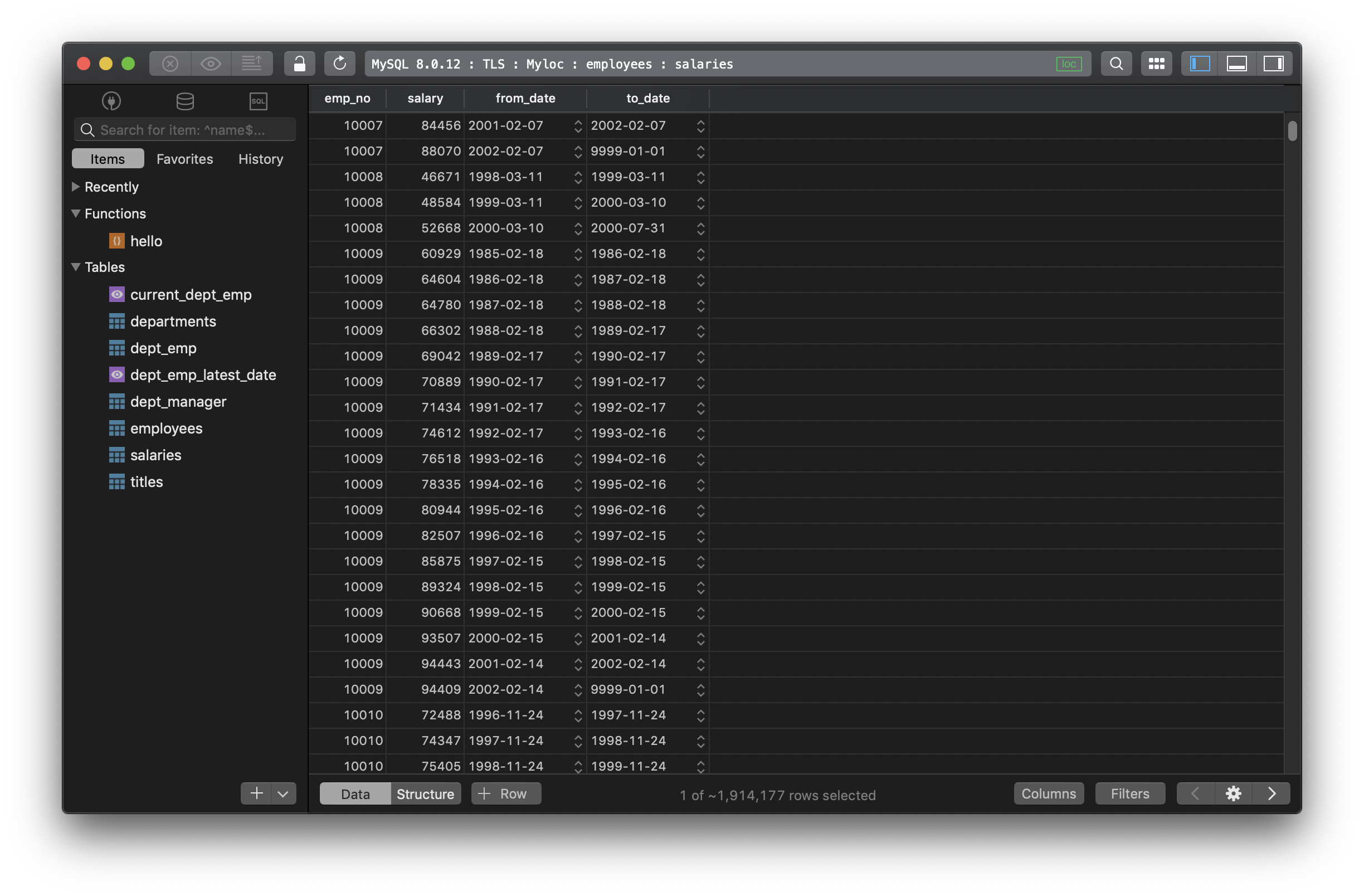MySQL DATE type and DATE functions
1. DATE type in MySQL
DATE type is one of five temporary datatypes for date and time values, along with TIME, DATETIME, TIMESTAMP, and YEAR.
DATE represents a date value with no time part. MySQL displays DATE values in 'YYYY-MM-DD' format with the supported range from '1000-01-01' to '9999-12-31'. MySQL might recognize DATE values in these formats:
- As a string in either
'YYYY-MM-DD'or'YY-MM-DD'format. A ”relaxed” syntax is permitted: Any punctuation character may be used as the delimiter between date parts. For example,'2019-10-04','2019/10/04','2019^10^04', and'2019@10@04'are equivalent. - As a string with no delimiters in either
'YYYYMMDD'or'YYMMDD'format, provided that the string makes sense as a date. For example,'20070523'and'070523'are interpreted as'2007-05-23', but'071332'is illegal (it has nonsensical month and day parts) and becomes'0000-00-00'. - As a number in either
YYYYMMDDorYYMMDDformat, provided that the number makes sense as a date. For example,19830905and830905are interpreted as'1983-09-05'.
Keep in mind that despite multiple formats accepted, the DATE value must be presented in year-month-day order.
For DATE values with two digit year part, MySQL interprets dates specified with ambiguous year values using these rules:
- Year values in the range 00-69 are converted to 2000-2069.
- Year values in the range 70-99 are converted to 1970-1999.
2. DATE functions
Here are some commonly used functions to work with DATE values in MySQL
DATE() function to get the date value from a date time value:
SELECT DATE('2019-10-04 01:20:30');
The result is “2019-10-04”
CURDATE() function to return the current date as a value in ’YYYY-MM-DD’ or YYYYMMDD format
SELECT CURDATE();
The result is “2019-10-04”
DATEDIFF() to return the difference as a value in days between two date values:
SELECT DATEDIFF('2019-10-04','2018-12-30');
The result is 278
DATE_FORMAT() function to format the date value according to the format string.
SELECT DATE_FORMAT('2019-10-04 22:23:00', '%D %M %Y');
The result is “4th October 2019”
DATE_ADD() function to add a number of days, weeks, months, years, etc., to a date value:
SELECT
DATE_ADD('2019-10-04', INTERVAL 10 DAY) AS '10 days later',
DATE_ADD('2019-10-04', INTERVAL 10 WEEK) AS '10 weeks later',
DATE_ADD('2019-10-04', INTERVAL 10 MONTH) AS '10 months later',
DATE_ADD('2019-10-04', INTERVAL 10 YEAR) AS '10 years later';
The result is
| 10 days later | 10 weeks later | 10 months later | 10 years later |
|---|---|---|---|
| 2019-10-14 | 2019-12-13 | 2020-08-04 | 2029-10-04 |
DAYOFMONTH(), or DAY() function, is to return the day on month for a date value:
SELECT DAYOFMONTH('2019-10-04');
The result is “4”
DAYNAME() function is to return the name of the weekday for a date value:
SELECT DAYNAME('2019-10-04');
The result is “Friday”
DAYOFWEEK() function is to return the day of the week for a date value as the week starts with Sunday (Sunday = 1):
SELECT DAYOFYEAR('2019-10-04');
The result is 6
DAYOFYEAR() function is to return the day of the year for a date value:
SELECT DAYOFYEAR('2019-10-04');
The result is 277
EXTRACT() function is to extract parts from the date value
SELECT
EXTRACT(YEAR FROM '2019-10-04') AS y,
EXTRACT(MONTH FROM '2019-10-04') AS m,
EXTRACT(DAY FROM '2019-10-04') AS d,
EXTRACT(YEAR_MONTH FROM '2019-10-04') AS ym;
The result is:
| y | m | d | ym |
|---|---|---|---|
| 2019 | 10 | 4 | 201910 |
LAST_DAY() function is to return the last day of the month from the input date value:
SELECT LAST_DAY('2019-10-04');
The result is “2019-10-31”
Need a good GUI tool for databases? TablePlus provides a native client that allows you to access and manage Oracle, MySQL, SQL Server, PostgreSQL, and many other databases simultaneously using an intuitive and powerful graphical interface.
Not on Mac? Download TablePlus for Windows.
On Linux? Download TablePlus for Linux
Need a quick edit on the go? Download TablePlus for iOS
